|
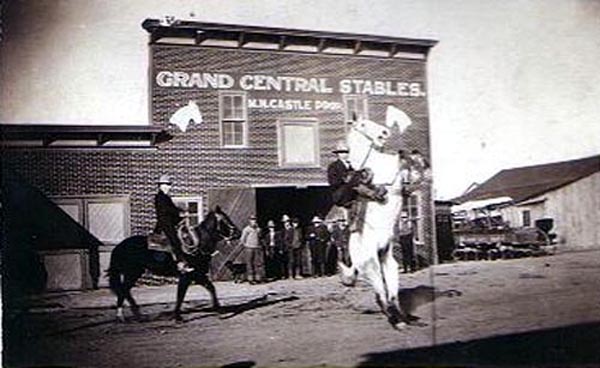
Grand Central Stables, West Second Street, approx. 1900.
The stables were owned by Martin M. "Shorty" Castle. Mounted on the white horse
is Blake Horn (1882-1955). Horn ran away from home in Alabama at about age of 15 in 1897 to become a cowboy.
For a time he worked on the Tobin Ranch. Later he became a rodeo cowboy and homesteaded his
own ranch proving up his claim in 1922.
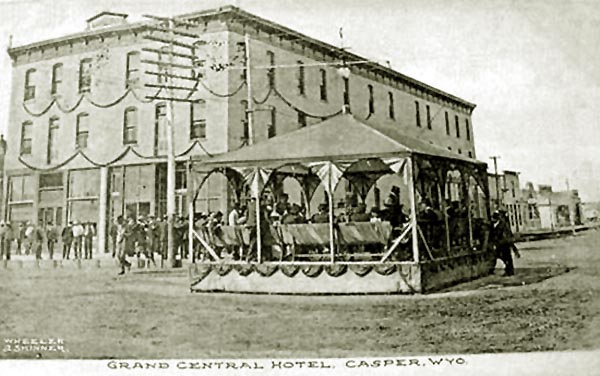
Grand Central Hotel, Center and 2nd Streets, 1907.
Note the doors on the second floor opening onto nothingness. The hotel, owned by liquor dealer Hugh L. "Colorado" Patton, was located on the
southwest corner of Center and 2nd Steets. Not withstanding Patton's nickname, he was born in
Michigan. As indicated by the next photo, originally the hotel
had porches all around.
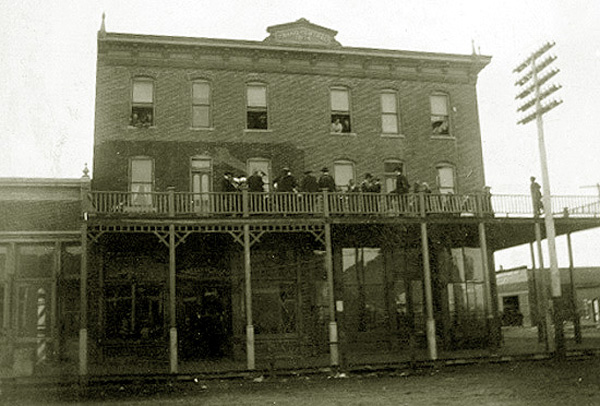
Grand Central Hotel, Center and 2nd Streets, prior to 1897.
The hotel was badly
damaged by a 5.8 Richter Scale earthquake on November 14, 1897. As a result of the
quake, a crack in the brick work formed all the way from the first floor to the third, causing the
terrified occupants of the hotel to flee into the street. Not withstanding Patton's nickname,
he was born in Michigan. Thus, in the repairs, the porches were removed. Ultimately the doors were
closed in. The Grand Central Barber Shop was operated by Hawks & Allen who advertised that they provided
"Vapor Massage Baths, Ladies and Gentlemen's Face Massage, Ladies Shampooing. Hair Cuts for children under 12 years old, 25cts."
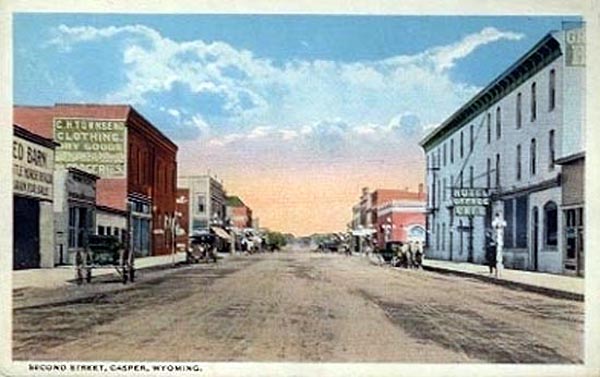
Second Street looking east to Center.
Grand Central Hotel on right. Charles H. Townsend's Clothing and
Dry Goods Store on the left.
Townsend's Clothing Store was opened in 1898. The building depicted above was constructed in
1903. Townsend later went into the banking business. The building housed both of his banks,
The Stockmen's National Bank of Casper and the First Trust & Savings Bank, at the same
time. Townsend served as Worthy Master of Casper Lodge No. 15 in 1897 and became Grand Master of
the Wyoming Grand Lodge in 1900. In 1903 he became the Worthy Grand Patron of the
Eastern Star. In 1924, Townsend opened his lasting contribution to
the skyline of Casper, the Townsend Hotel at 115 N. Center discussed on a later page.
On February 11, 1928, Townsend withdrew from the
banking business. Nevertheless, he continued with civic and fraternal affairs serving as District
Governor of the Rotary in 1930 and becoming Most Worthy Grand Patron of the Eastern Star in 1940.
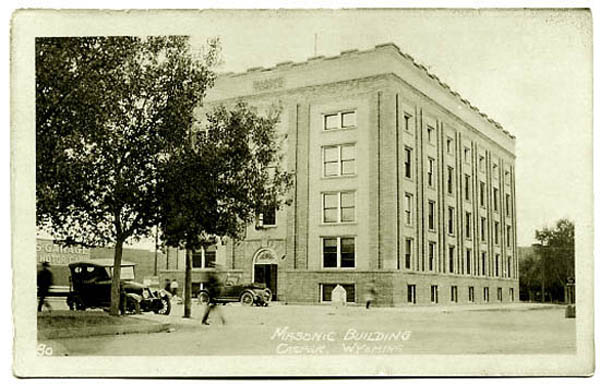
Masonic Temple, 105 N. Center Street, approx. 1922.
The Temple was designed by Casper architect Lavier C. Belen Shaffer (1880-1965) and constructed in 1914 at a cost of
approximately $40,000. Casper Lodge NO. 15 received its dispensation on August 26, 1893 and was chatered on
December 5, 1893. The Lodge originally met above D. A. Robertson's saloon and later in the
Odd Fellows building then located at 134-136 East 2nd Street. The Lodge building originally had a 2-lane bowling alley in the basement. On the first floor
was a ballroom which was rented out to among others to the Isis Orchestra. The ballroom was converted to an additional lodge room in
1964. The main lodge room is on the second floor.
The architect Lavier Shaffer left Casper and moved to Cheyenne and later to Alamosa, Colorado. There he designed among other things
the Elks Lodge.

Intersection of 2nd Street and Center, approx.
1905.
C. H. Townsend's Stockmen's National Bank is on the far corner. The buildings on the
right were later replaced by the Rialto Theatre discussed on a subsequent page.
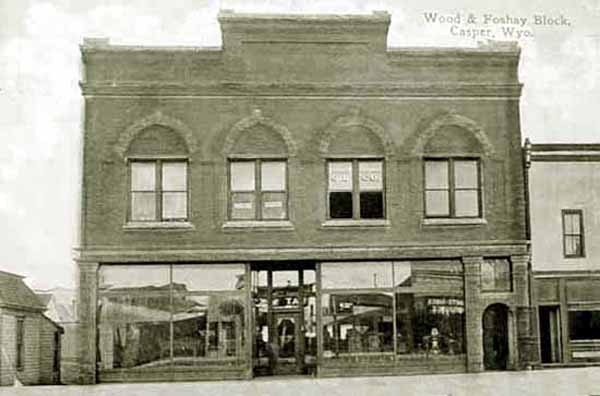
Wood and Foshay Furniture Store, 1911.
The Wood and Foshay store, located on the south side of Second Ave., between Center and Wolcott, became the Chamberlain
furniture store in 1914 and for a short time was the site of J. C. Penney's Golden Rule Store. Its site is
now occupied by the Consolidated Royalty Building constructed in 1917.
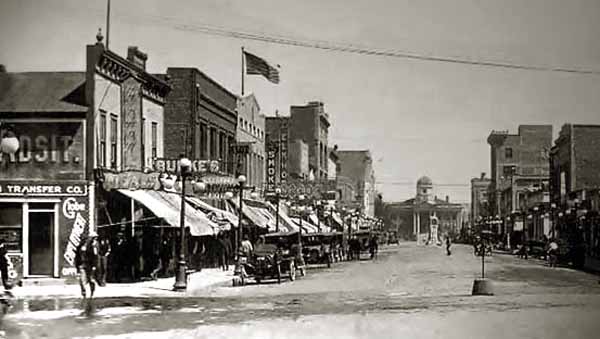
Center Street looking north, approx. 1912. Photo by
Ralph Doubleday
Casper Photos continued on next page.
|